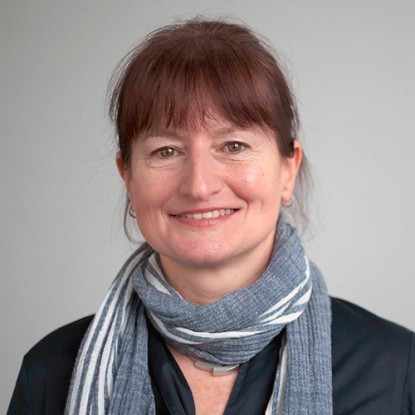
Regine von Klitzing (Darmstadt)
Prof. von Klitzing is the recipient of the 2023 ECIS-Solvay price in recognition of her recent breakthrough studies on foams stabilized with soft particles. Foams stabilized by soft polymer particles are of interest for many applications in food technology or for catalysis. Proteins play an im- portant role as foam stabilizers, but their stabilizing mechanism depends very much on the specific class of proteins, and it is difficult to get insights into unifying concepts due to the existing large protein variety. Therefore, better controlled model systems are needed. A suitable model system for soft and deformable particles are colloidal micro- gels. Among them, (thermosensitive) poly(N-isopropylacrylamide) (PNIPAM) microgels serve as the gold standard for this class of materials. PNIPAM microgels adsorb sponta- neously and irreversibly at the oil/water interface, which makes them good emulsion sta- bilizers. Although PNIPAM microgels adsorb also efficiently at the air/water interface, much less is known about their performance as foam stabilizers. To understand and con- trol the foamability and foam stabili-zation by PNIPAM microgels the group of Regine v. Klitzing started recently to explore microgel–stabilized foams at different length scales, through studies on macroscopic foams, foam bubbles, single microscopic foam films, the adsorption of foam stabilizers at the planar liquid/air interface, and the struc- tural and mechanical properties of the foam stabilizers (e.g., microgels) themselves. Among other studies we would like to address the publication: M. Kühnhammer, K. Gräff, E. Loran, O. Soltwedel, O. Löhmann, H. Frielinghaus, R. von Klitzing “Structure formation of PNIPAM microgels in foams and foam films” Soft Matter, 2022, 18, 9249. DOI: 10.1039/D2SM01021F, as the center piece giving new insights in the field and pre- senting a seed for new development in the field of foams stabilized by soft particles.
What distinguishes Regine von Klitzing’s work is the combination of
a) the use of many different techniques (small angle neutron scattering (SANS), dynam- ic light scattering (DLS), indentation by atomic force microscopy (AFM), thin film pres- sure balance (TFPB)),
b) the development and enrichment of techniques (temperature-controlled foam column for height sensitive SANS measurements, optical extension of TFPB for disjoining pres- sure isotherms of heterogeneous films) and
c) the combination of experiment and modelling (modelling of SANS and TFPB data).
The uniqueness of the central study described here is to relate the structural and me- chanical properties of foam stabilizers (i.e., microgels) and their stabilizing performance of foam films to the foam properties.
The main approaches and outcomes are described below in more detail:
Since thermosensitive PNIPAM microgels are used in these studies, the foams are ther- moresponsive as well: They are stable at temperatures below the so-called volume phase transition temperature (VPTT), and rapidly collapse when heated above the VPTT. Therefore, the study focuses on a temperature regime well below the VPTT, where mi- crogels are swollen and the foams stable.
The structure of the foam was analyzed by SANS in a temperature-controlled home- built foam cell designed and constructed by the Klitzing group (Kühnhammer et al. “Flexible Sample Environments for the Investigation of Soft Matter at the European Spallation Source: Part III—The Macroscopic Foam Cell.” Applied Sciences 2021, 11, 5116. DOI: 10.3390/app11115116). This cell allows SANS measurements at different foam height. The SANS curves were analyzed using a self-written program considering an incoherent superposition of reflectivity curves of a set of normal distributed film thickness and a Porod distribution. The model was adapted from a model recently pub- lished by the Klitzing group (Kühnhammer et al. “A new model to describe small-angle neutron scattering from foams” Journal of Applied Crystallography 2022, 55, 758, DOI 10.1107/S1600576722004691) to describe surfactant stabilized foams. This model al- lowed the complete description of SANS curves of foams. The data show a clear Porod behavior (I ∝ q−4) over a large q-range, which is attributed to plateau borders, nodes, and the thicker parts of the foam films.
